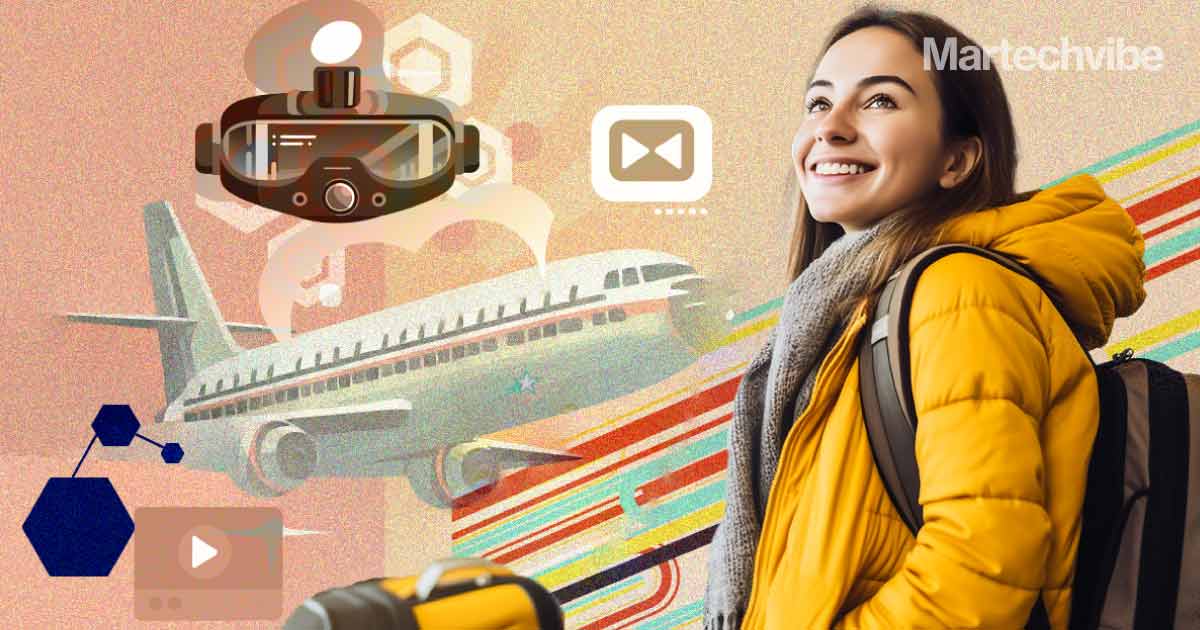How Can XR Drive the Next Era of Air Travel
By enhancing the traveller experience, XR innovation is transforming the planning experience and the overall journey, making travel more immersive and convenient. This isn't about tech for tech's sake - it's about harnessing technology to reinvigorate CX.
Topics

Today’s travellers demand more convenient, entertaining, and memorable experiences than ever before, leaving the industry wide open to a new era of digital disruption.
Leading the charge is an arm of technologies known as extended reality (XR), which includes augmented and virtual reality (AR/VR) and artificial intelligence (AI). By leveraging XR, travel providers can reimagine and elevate customer experiences, ensuring every journey is smooth and exciting, from booking to landing.
An airport can become an engaging place to spend time, play immersive games, and even collect real rewards. Airlines can soothe worries, encourage bookings, and even allow passengers to virtually explore their final destinations before landing.
But this isn’t about tech for tech’s sake – it’s about harnessing technology to reinvigorate customer experiences and make the travelling part as enjoyable as the destination itself.
Try Before You Fly
One area where XR will shine is in building virtual worlds. Airlines can empower would-be travellers to explore their products and services ahead of time within digital spaces in a uniquely immersive way. This digital reality enhances the research-to-buy process, inspiring digital native passengers to make well-informed decisions regarding their airline of choice and the quality of service they can expect both on the ground and in the air.
We see this in practice with Qatar Airways – voted the best airline in the world a whopping seven times for its incredible service and innovative application of XR throughout the customer journey. The airline launched its virtual world QVerse in 2022, allowing customers to walk through an airport check-in scenario and explore different aircraft and plane seats, amongst other details, before clicking through to make a real purchase. Since its launch, the operator has seen a 1,000% return on ad spend and over 200% product return on investment, highlighting the growing appetite for this pre-travel preview.
Ultimately, more educated booking decisions lead to more money spent because happy travellers are loyal travellers. The better the experience you can create for your customers, the more likely they will return and even bring friends next time.
Enhancing Convenience and Reducing Stress
But beyond booking a ticket, arriving at the airport is often a stressful experience. From navigating complex airport layouts to deciding whether it’s even worth queuing up at the ticket desk to ask your burning questions. XR can help alleviate these pains.
Qatar Airways‘ Metahuman flight attendant, Sama, is a great example. Accessible on computer and mobile, the 3D humanlike avatar can currently answer customer queries about things like baggage allowance, cabin preference, and meal options, amongst other concerns, acting as a personal concierge for every passenger. In fact, with recent technological progress, the airline has announced that Sama will soon have access to Open-AI, allowing her to engage in more lifelike chitchat, play games with passengers and answer more nuanced questions in real-time.
Unsurprisingly, AI brand ambassadors are making waves across multiple industries like Fashion, FMCG and Automotive. But why? Because they give brands a digital face for consumers to engage with – one that can feature across all digital touchpoints, flawlessly recite brand messaging and can appear in any and all content until the end of time.
Also Read: How Does UAE Fare with Digital Travel Credentials?
Fighting Pre-Boarding Boredom
But XR can do so much more than just travel troubleshooting. It can transform airports from monotonous transition points into interactive playgrounds.
Travelling is about having new experiences and creating memories. But why not start that journey before boarding? Imagine receiving a personalised AI airport itinerary equipped with dining and shopping options, as well as real-time terminal navigation according to your flight details and schedule. Not only would this ease stress, but it would also transform that waiting period into a tailored experience.
Incorporating gamified AR elements is also a huge opportunity for commercial partners to engage these captive consumers. Remember when people were walking the streets capturing digital Pokemon? Why shouldn’t grounded passengers also be able to capture real discounts and offers as they navigate the terminal? The point is that there are endless ways to gamify and spark joy in these typically mundane environments.
On-board innovation
Once onboard, the pathological need for entertainment only gets stronger. While this desire for distraction is typically met with built-in screens and earphones, some airlines are taking this offering to the next level.
This is why we’ve recently seen brands such as Hainan Airlines upgrade to in-flight XR glasses that allow passengers to watch 3D movies, read e-books, and play immersive games in the air. Similarly, Maldivian airline Beond will soon become the world’s first airline to offer Apple Vision Pro headsets onboard, allowing customers to virtually explore the stunning views and activities on offer at their final destination.
This is a brand-new layer of entertainment and education for brands to explore. By harnessing these technologies, airlines can offer a glimpse into different cultures and destinations, spark richer excitement around travelling, and give customers the most memorable trips.
Welcome to the new era of air travel.







































































































